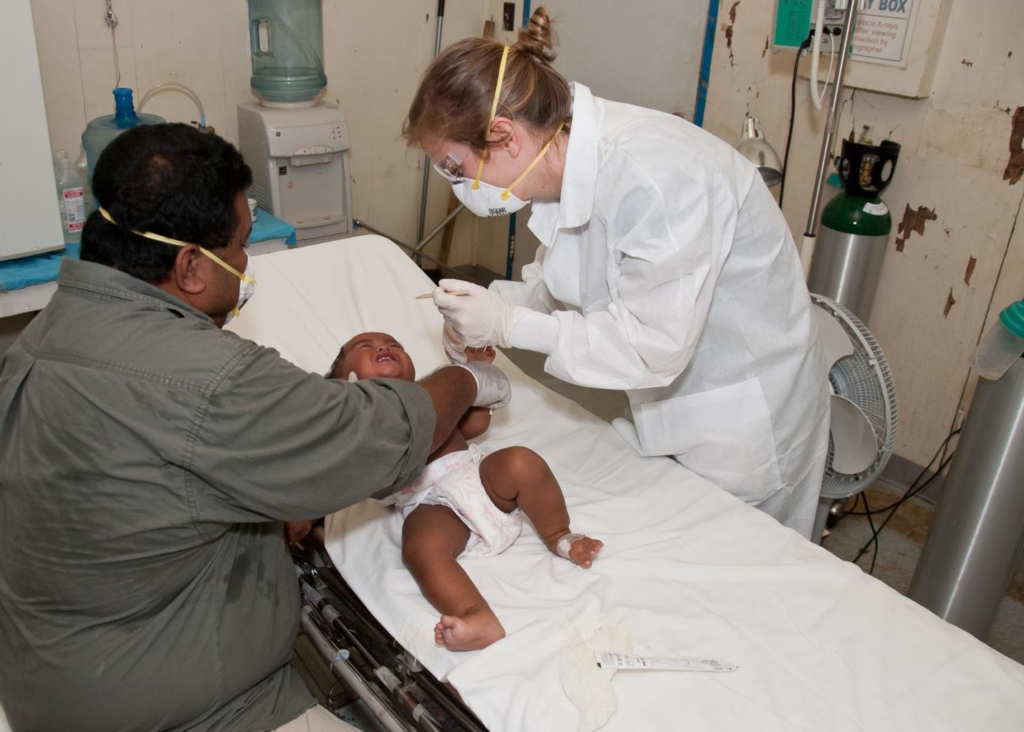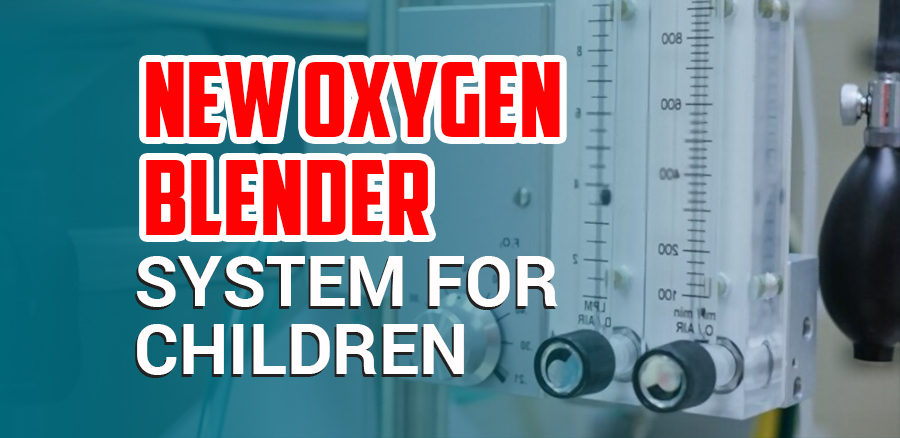Novel Oxygen Blender System for Children
Safe and effective oxygen therapy is essential for the treatment of hypoxemic infants and young children worldwide. Unfortunately, access to reliable oxygen therapy is not available to many of the children who need it the most. There are children all over the globe who live in underdeveloped areas and lack the resources to get proper access.

In this blog post, we will examine a recent study that tested a novel oxygen blender system designed to deliver accurate and concentration-controlled oxygen-enriched air to hypoxemic children up to age five.
Oxygen Therapy in Newborns
Pneumonia is a leading cause of death in children under five, and hypoxemia is a common complication of respiratory distress syndrome, birth asphyxia, and sepsis. Providing supplemental oxygen can be a lifesaving treatment for hypoxemic infants and children.

While access to oxygen has grown over the past few decades, increased access also increases the risk of complications from exposure to excessive amounts of oxygen.
Overexposure to Oxygen in Newborns
Premature infants are especially vulnerable to hyperoxia, overexposure to oxygen can cause a number of harmful conditions. Some of them are as follows:
1. Retinopathy of Prematurity (ROP): Preterm infants with underdeveloped blood vessels in the retina can develop abnormal blood vessels when exposed to high levels of oxygen, leading to ROP. ROP can cause blindness or impaired vision.
2. Bronchopulmonary Dysplasia (BPD): Preterm infants who receive high levels of oxygen can develop BPD, a chronic lung disease that can cause long-term respiratory issues.
3. Oxidative Stress: When exposed to high levels of oxygen, a preterm infant’s body may generate more free radicals, leading to oxidative stress that can harm cells and tissues.
4. Brain Damage: Overexposure to oxygen can harm brain cells and lead to neurological issues in preterm infants, including cerebral palsy, developmental delays, and cognitive impairments.
5. Long-term Cognitive and Behavioral Difficulties: Studies suggest that overexposure to oxygen in preterm infants can increase the risk of cognitive and behavioral difficulties later in life.
To minimize the risks from exposure to excessive amounts of oxygen, infants, and children receiving oxygen therapy should receive a mixture of oxygen diluted with air. However, affordable methods for providing blended low-flow oxygen therapy to children and infants via nasal cannula are still not readily available.
The Oxygen Blender System
The Oxygen Blender System is a novel system designed to accurately deliver concentration-controlled oxygen-enriched air to hypoxemic children up to age five. This system does not require compressed medical air, is compatible with both oxygen tanks and medical oxygen concentrators, and is low-cost.
What is the Oxygen Blender System?
An oxygen blender system is a medical device that mixes compressed medical-grade oxygen and air in order to produce a gas mixture of a specific concentration, typically between 21% and 100% oxygen. The oxygen blender system is used to provide oxygen therapy to patients who require supplemental oxygen due to conditions such as respiratory failure, chronic obstructive pulmonary disease (COPD), or other respiratory disorders.

The oxygen blender system typically consists of several components, including:
Oxygen Source: This can be a medical-grade oxygen cylinder, oxygen concentrator, oxygen generator, or a wall-mounted oxygen outlet.
Air Compressor: An air compressor is used to draw in ambient air and compress it to the desired pressure.
Flowmeter: The flowmeter is a device that controls the flow rate of the gas mixture.
Blender Unit: The blender unit is the core component of the system. It receives the compressed air and oxygen streams and mixes them in a precise ratio to create a specific concentration of oxygen.
Humidifier: A humidifier may be added to the system to add moisture to the gas mixture before it is delivered to the patient.
Patient Interface: The patient interface is the device that delivers the oxygen mixture to the patient. This can be a nasal cannula, face mask, or other device depending on the patient’s needs.
The oxygen blender system works by using compressed air and oxygen streams to create a precise mixture of oxygen and air at a specific concentration. The flow rate and concentration of the gas mixture can be adjusted to meet the patient’s individual needs. The gas mixture is then delivered to the patient through a patient interface, such as a nasal cannula or face mask.
Overall, the oxygen blender system is an important medical device used to provide supplemental oxygen therapy to patients with respiratory disorders. Its precise control over oxygen concentration and flow rate allows medical professionals to tailor treatment to each individual patient’s needs.
Sanai Health for Oxygen Therapy
We have worked for more than 2 decades to ensure that our oxygen-generating products are capable of providing oxygen for a variety of needs. Our oxygen concentrators can easily regulate the flow rates and other requirements of care. With our products, you do not need to worry about harmful components being present in oxygen. You can easily utilize our products for your child’s oxygen needs. Visit our website to know the options.
Since Sanai Health has been manufacturing oxygen devices for more than 2 decades, you will find a huge selection on our website.
End-note
Study shows that Oxygen Blender System accurately controls oxygen concentrations and blended air flow rates and is compatible with both oxygen tanks and oxygen concentrators. This innovation may be an opportunity for improved infant and child oxygen treatment worldwide.
Access to reliable oxygen therapy is essential for the treatment of hypoxemic infants and children worldwide. The Oxygen Blender System offers an affordable and reliable alternative to traditional pneumatic blenders that require compressed medical air, are incompatible with medical oxygen concentrators, and are not accessible to many hospitals.
The Oxygen Blender System also offers an improvement to the current methods of oxygen delivery for children and infants via nasal cannula. Current Venturi blenders on the market are inaccurate and inefficient when attached to higher resistance circuits, especially at the lower flows needed by smaller children and infants. The Oxygen Blender System is an effective and low-cost solution to these problems.


